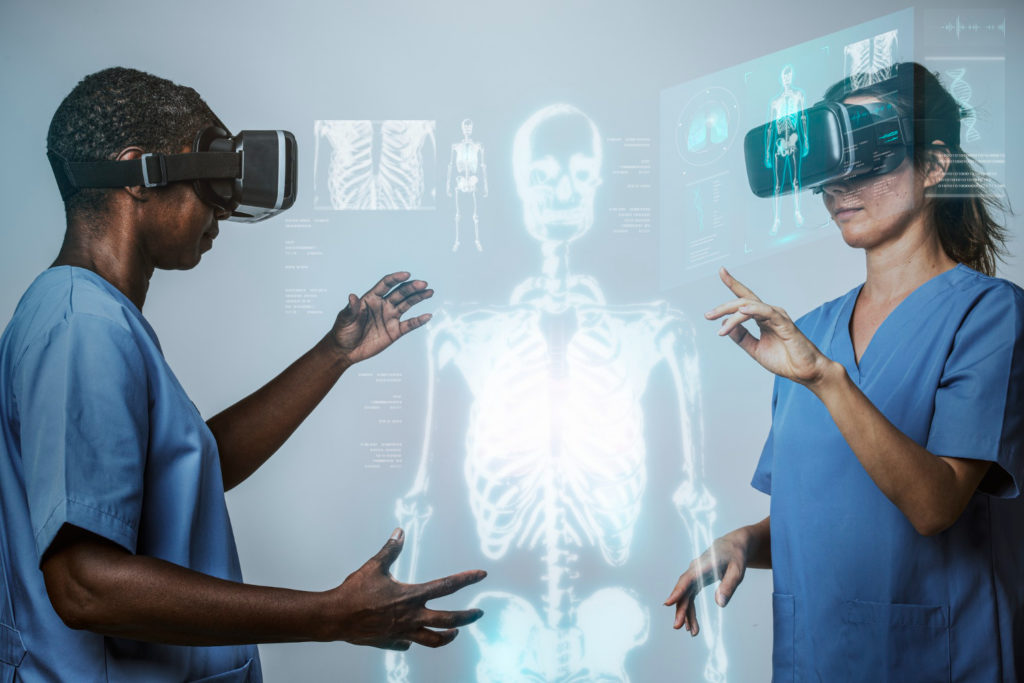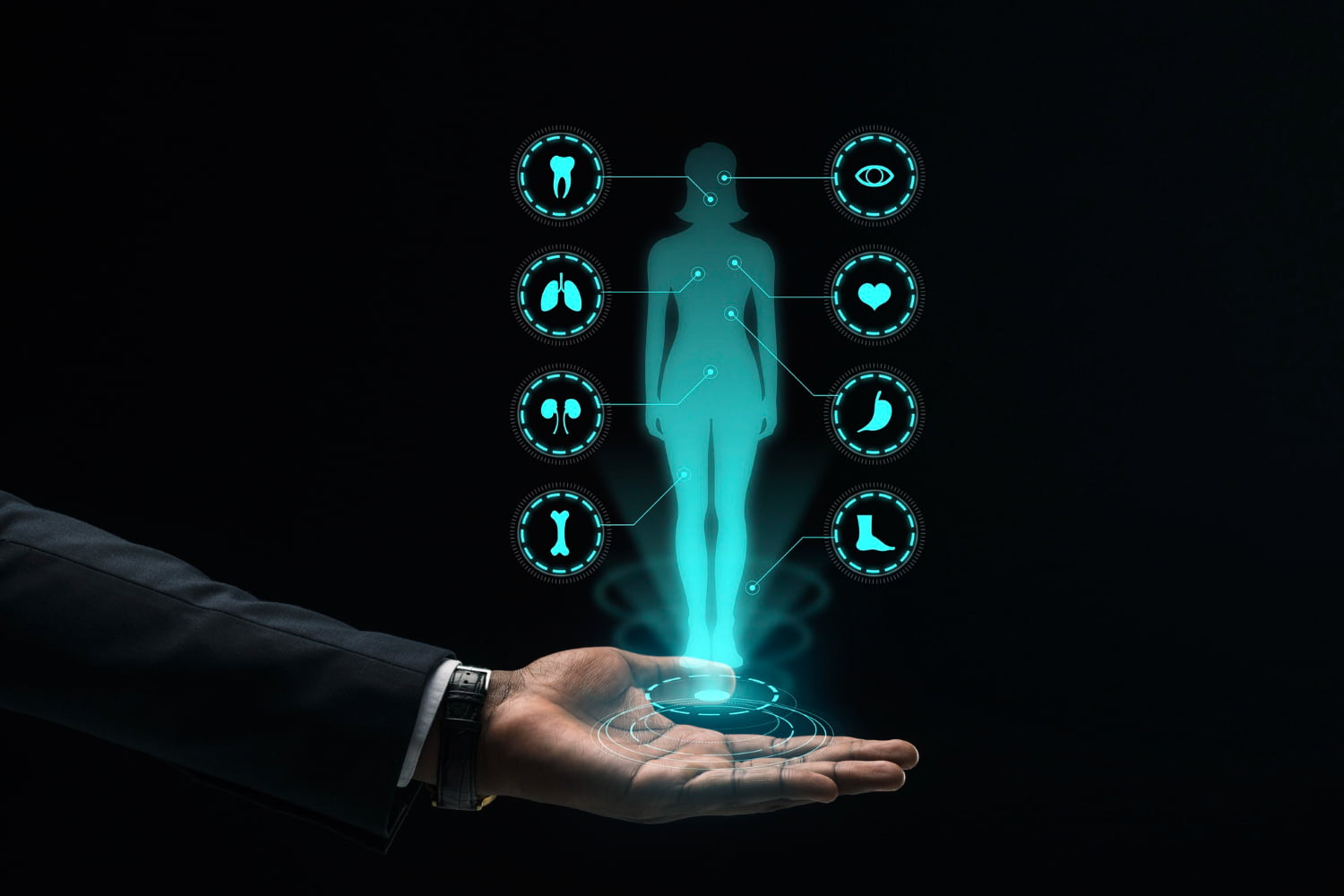In recent years, the healthcare sector has undergone a significant transformation, largely fueled by technological advancements. Artificial Intelligence (AI) and Telemedicine are at the forefront of this revolution, fundamentally changing how healthcare services are delivered and experienced. This evolution is not just confined to high-tech hospitals in developed countries but is also making strides in remote and underserved areas, marking a new era in global healthcare.
The incorporation of AI and telemedicine in healthcare is more than just a trend; it’s a vital adaptation to the increasing demands of a growing and aging global population. These technologies offer scalable, efficient solutions to some of the most pressing healthcare challenges. Understanding their implications is essential for everyone involved in healthcare, from practitioners and policymakers to patients themselves. This understanding is crucial for navigating the future of healthcare, which is increasingly becoming digital and patient-centered.
AI in Healthcare: A New Frontier
Artificial Intelligence is redefining the realm of diagnostics in healthcare. With its capability to process and analyze vast amounts of data at unprecedented speeds, AI is enhancing the accuracy and efficiency of diagnostic procedures. Advanced algorithms can now interpret medical images, such as X-rays, CT scans, and MRIs, more quickly and often more accurately than human experts. This not only expedites the diagnostic process but also opens up possibilities for early detection of conditions that were previously challenging to diagnose.
The impact of AI extends beyond diagnostics into the customization of patient care. Leveraging the power of big data and machine learning, AI technologies can analyze a patient’s unique health profile, including genetic information, lifestyle factors, and medical history. This analysis enables healthcare providers to develop highly personalized treatment plans. These tailored plans are more effective as they cater to the individual’s specific needs, leading to better outcomes, fewer side effects, and overall improved patient satisfaction. AI’s role in personalizing medicine represents a significant shift towards a more patient-centric approach in healthcare.
Telemedicine: Bridging the Healthcare Gap

The Convenience of Remote Consultations
Telemedicine, the delivery of healthcare services via digital platforms, has emerged as a crucial solution in making healthcare more accessible and convenient. It has particularly gained momentum in the wake of global challenges like the COVID-19 pandemic, where the need for remote healthcare services became more pronounced. Telemedicine offers several key benefits:
- Reduced Need for Physical Travel: Patients can receive medical consultations from the comfort of their homes, eliminating the need for travel, which is especially beneficial for those in remote or rural areas.
- Time Efficiency: It saves time for both patients and healthcare providers by reducing the waiting time and administrative burdens often associated with in-person visits. Flexibility: Offers flexible scheduling options, making it easier for patients to fit healthcare into their busy lifestyles.
Expanding Access to Healthcare Services Globally
Telemedicine has a profound impact on global healthcare access. Its significance can be understood through several key points:
- Overcoming Geographic Barriers: Telemedicine breaks down geographical barriers, enabling patients in remote or underserved areas to access specialist care that might not be available locally.
- Bridging the Urban-Rural Divide: It helps in bridging the gap between urban and rural healthcare services, ensuring more equitable healthcare access.
- Supporting Chronic Disease Management: Patients with chronic conditions can receive ongoing support and monitoring without frequent hospital visits, enhancing their quality of life.
Enhancing Patient Engagement and Education
Telemedicine also plays a pivotal role in patient education and engagement:
- Increased Patient Participation: By being more involved in their care process, patients are likely to be more engaged and adherent to treatment plans.
- Educational Resources: Telemedicine platforms often provide access to educational materials, helping patients better understand their health conditions and management strategies.
Key Challenges and Opportunities
While telemedicine offers numerous advantages, it also faces challenges that need addressing:
- Technology Access and Literacy: Ensuring patients have access to necessary technology and are comfortable using it is crucial for telemedicine’s success.
- Regulatory and Reimbursement Policies: Navigating varying regulations and ensuring fair reimbursement for telemedicine services are ongoing challenges. Maintaining Quality of Care: Ensuring that the standard of care provided remotely is equivalent to in-person consultations is essential.
Integrating AI and Telemedicine: A Synergistic Approach
The integration of Artificial Intelligence (AI) into telemedicine is significantly transforming patient-doctor interactions, enhancing the quality of remote consultations in several key ways. Firstly, AI algorithms are capable of analyzing patient data in real-time, offering healthcare professionals personalized insights during consultations, which leads to more informed and tailored patient assessments. This improved decision-making process, supported by AI-driven analytics and predictive models, facilitates better patient outcomes.
Furthermore, the combination of AI with telemedicine has enabled the continuous monitoring of patient health, a vital component in managing chronic diseases and promoting preventive healthcare. Wearable technology, such as smartwatches and fitness trackers, plays a crucial role in this aspect by collecting essential health data like heart rate, activity levels, and sleep patterns. AI systems then analyze this data to provide valuable health insights. Predictive health analytics, another facet of this integration, allows for the early detection of potential health issues, enabling timely interventions. Remote Patient Monitoring (RPM) devices further augment this capability by transmitting real-time health data to healthcare providers, ensuring ongoing monitoring of patients, particularly those with chronic conditions.
In addition to enhancing patient care, AI and telemedicine collaboration streamlines healthcare workflows. AI can automate routine administrative tasks, like scheduling appointments and patient follow-ups, thus increasing overall efficiency. It also provides enhanced diagnostic support, assisting in preliminary diagnoses and allowing healthcare professionals to concentrate on critical aspects of patient care.
However, this integration also presents unique challenges that need to be addressed. Interoperability and standardization are essential to ensure different systems and devices work seamlessly together for effective integration. Healthcare professionals require training to effectively use these integrated technologies. Moreover, ethical and privacy concerns are paramount, with a need to maintain patient confidentiality and ensure the ethical use of AI in patient care. These challenges highlight the importance of a balanced and thoughtful approach to integrating AI and telemedicine in the healthcare sector.
Challenges and Considerations
Navigating Privacy and Security Concerns
The digital transformation in healthcare, particularly with AI and telemedicine, intensifies concerns around data privacy and security. The handling of sensitive patient information necessitates robust cybersecurity measures and adherence to regulations like HIPAA (Health Insurance Portability and Accountability Act). Ensuring the confidentiality and integrity of patient data is paramount, as breaches can have serious implications for patient trust and the overall credibility of digital healthcare services.
Addressing the Digital Divide and Accessibility
The promise of AI and telemedicine in enhancing healthcare access is tempered by the digital divide. Not all populations have equal access to the necessary technology or internet connectivity. This divide can exacerbate existing healthcare disparities, potentially leaving the most vulnerable populations further behind. It is crucial to develop strategies that increase digital literacy and access to technology, especially in underserved and rural areas.
Ethical Considerations and AI Bias
The use of AI in healthcare also raises ethical questions, particularly regarding biases in AI algorithms. These biases can stem from the data on which AI systems are trained. If the data is not representative of diverse populations, AI-driven diagnostics and treatments might not be equally effective for all patient groups. Addressing these biases requires a conscious effort to develop AI models that are inclusive and representative of diverse patient demographics.
The Need for Continuous Learning and Adaptation
As AI and telemedicine technologies evolve rapidly, there is a continuous need for learning and adaptation among healthcare professionals. Keeping abreast of the latest developments and understanding how to integrate these technologies into clinical practice is essential. This requires ongoing education and training programs, ensuring that healthcare providers can effectively leverage these tools to enhance patient care.
Balancing Technological Advancements with Human Touch
In the pursuit of technological advancement, it’s crucial not to lose sight of the importance of the human element in healthcare. Technology should augment, not replace, the human touch that is fundamental to patient care. Maintaining a balance where technology enhances the efficiency and accuracy of healthcare while preserving the empathy and understanding provided by human caregivers is a critical consideration.

Looking Ahead: The Future of Patient Care
Predictions and Emerging Trends
As we peer into the future of healthcare, AI and telemedicine are poised to play even more integral roles. Predictions suggest a continued surge in AI-driven innovations, with more sophisticated algorithms enhancing diagnostic accuracy and treatment personalization. Telemedicine is expected to expand its reach, breaking down more barriers to healthcare access and becoming a standard component of patient care. Additionally, emerging trends like virtual reality in therapy and the use of AI for drug discovery and disease prediction are likely to gain traction.
Preparing for a Digitally-Driven Healthcare Era
To thrive in this digitally-driven healthcare era, preparation at multiple levels is required. Healthcare systems must invest in the necessary infrastructure to support these technologies, including robust internet connectivity and advanced data security measures. There’s also a need for healthcare professionals to continuously update their skills to keep pace with technological advancements. Importantly, patient education and engagement in digital health should be prioritized, ensuring that individuals are informed and comfortable with these new modes of healthcare delivery.
Embracing a Collaborative Future
The future of healthcare is not just about technology; it’s about the collaboration between various sectors – healthcare providers, technology companies, policymakers, and patients themselves. Embracing a collaborative approach will be crucial in navigating the challenges and maximizing the opportunities presented by AI and telemedicine. This collaboration will ensure that technological advancements in healthcare are inclusive, equitable, and truly beneficial to all segments of the population.
Conclusion
The integration of AI and telemedicine is transforming healthcare in unprecedented ways. By improving diagnostic accuracy, enhancing treatment personalization, and making healthcare more accessible, these technologies are shaping a future where healthcare is more efficient, inclusive, and patient-centric. As we move forward, the focus must be on leveraging these technologies responsibly and equitably, ensuring that the benefits of digital healthcare are accessible to all. The future of healthcare is promising, with AI and telemedicine serving as its core, leading us towards a more interconnected and healthier world.
